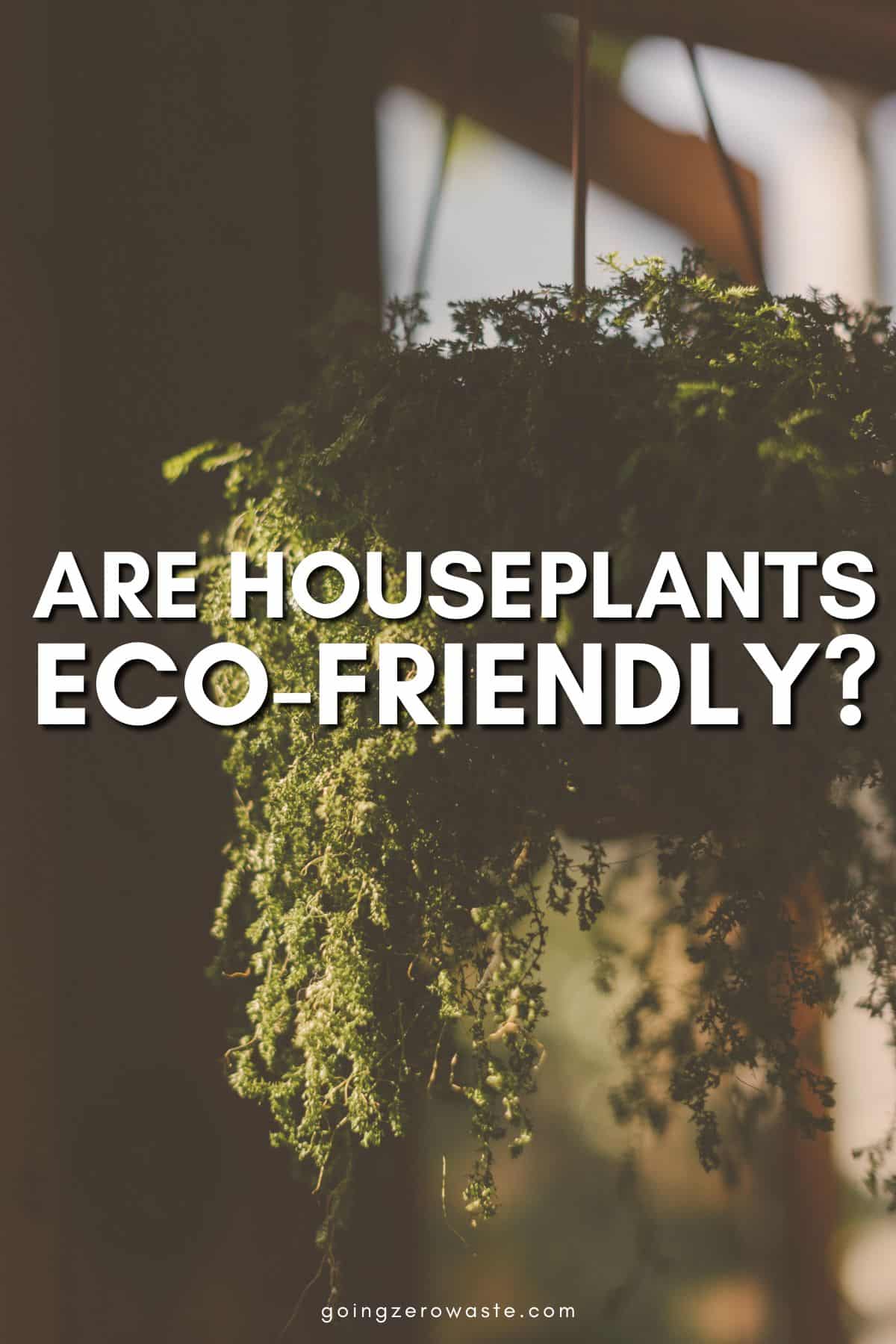Final Up to date on Might 9, 2024
I like houseplants: They’ll actually open up a room and are such an effective way to fill an area. I presently have a fairly Cash Tree plant that’s pet-friendly and provides the proper pop of inexperienced to my desk area.
I’m not alone: The houseplant business is booming. In 2019 a survey revealed U.S. houseplant gross sales elevated by 50% to $1.7 billion in three years’ time and that development has snowballed since then.
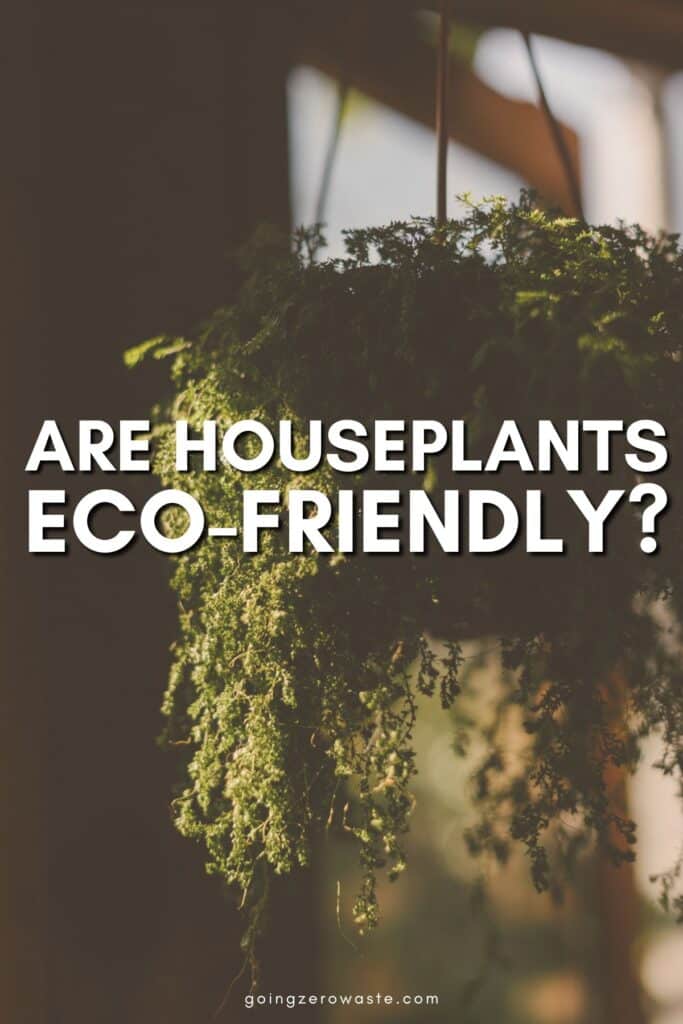
However is that this horticultural passion eco-friendly? That depends upon the way you get your plant infants, and the way/the place they had been grown.
Mockingly, inexperienced indoor areas can come at a price to the surroundings.
Like every part else we purchase, houseplants even have an environmental impression. There are a number of elements to contemplate, corresponding to “plant miles”, plastic waste and peat moss harvesting.
Right here’s what it’s essential to know concerning the plant business’s environmental footprint, in case your plant obsession is contributing to it, and what you are able to do about it.
environmental impacts of houseplants
Vegetation could also be inexperienced, however that doesn’t routinely make them eco-friendly.
There are a number of environmental impacts of houseplants to contemplate. Listed here are just a few that we are going to be diving into:
- Plant miles: How far did your plant journey to get to you?
- Plastic waste: Plastic pots are the first container used to accommodate vegetation.
- Peat moss harvesting: Peat moss, an ingredient in most potting mixes, is being overharvested.
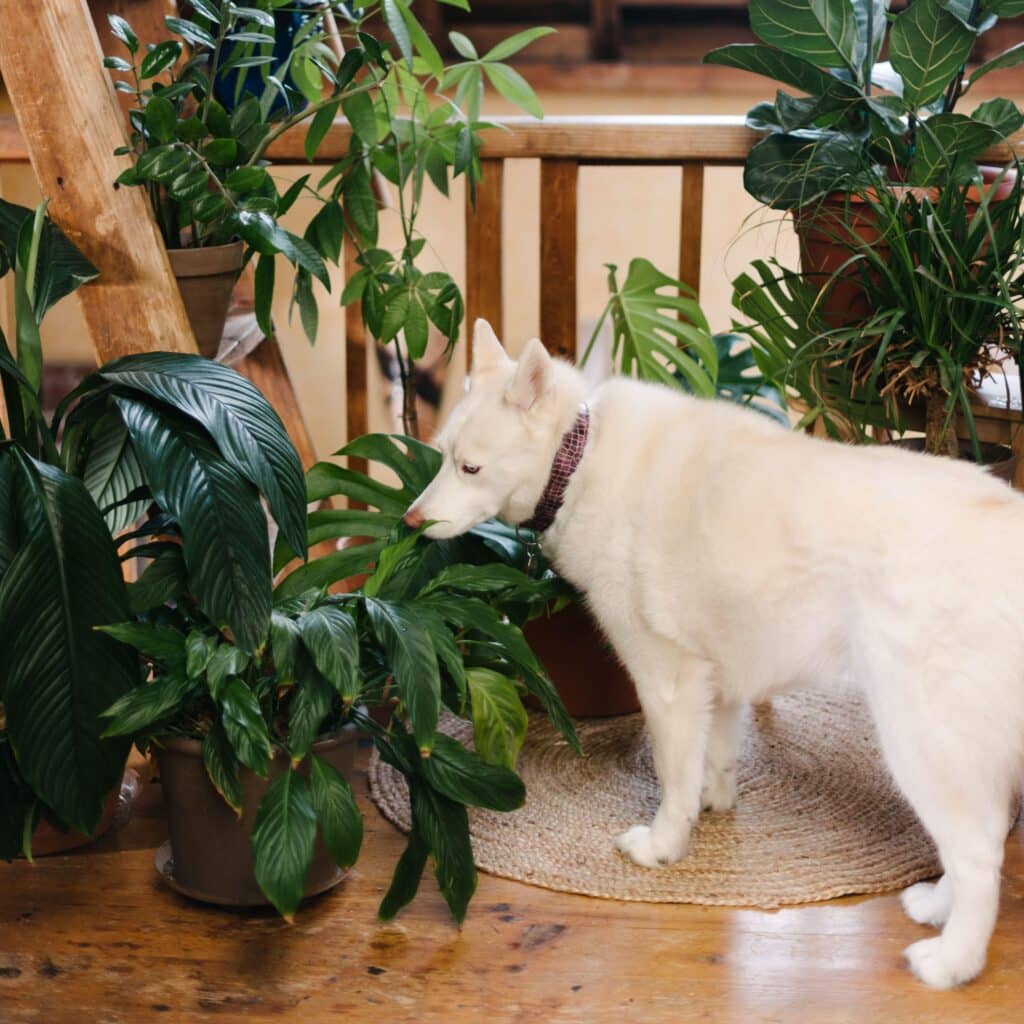

plant miles
Lots of the houseplants we love come from tropical or subtropical environments. That’s a giant purpose they thrive indoors as a result of they want persistently heat temperatures.
Most houseplants are imported from abroad and journey a whole bunch of miles earlier than entering into our houses. The Swiss Cheese plant is only one instance: It hails from Panama and southern Mexico.
Transporting vegetation over lengthy distances, whether or not by aircraft, boat or truck generates plenty of carbon emissions. That is also known as “plant miles,” aka the full distance houseplants journey to get to you.
Nonetheless, plant miles aren’t the one drawback: It’s how they’re harvested that additionally issues. Plant poaching is an actual menace attributable to rising curiosity in uncommon vegetation and the way a lot they fetch on the black market.
For instance, the World Heritage Web site is the world’s most biodiverse desert. Greater than 3,000 plant species exist in a comparatively small space. Lots of them are prized succulents that fetch excessive costs on the black market.
A few of these species dwell in an space smaller than a soccer area, so it could be very straightforward for a poacher to render the species extinct in a single morning.
Because of this, it’s so necessary the plant business turns into extra clear about the place they’re sourcing their vegetation.
what about houseplants grown in greenhouses?
One potential resolution to fight plant poaching is to develop houseplants in a greenhouse. Nonetheless, that is an imperfect resolution, as greenhouses are big vitality suckers possible powered by fossil fuels.
Greenhouses are geared up with lighting and high-tech irrigation programs that require plenty of vitality to take care of, particularly for fickle houseplants that want a certain quantity of heat, daylight, and water.
Whereas greenhouses definitely lower down on plant miles, and guarantee there’s no plant poaching, they might be much more sustainable in the event that they ran on renewable vitality. Sadly, many don’t, or will not be clear about the place they’re sourcing their vitality from.
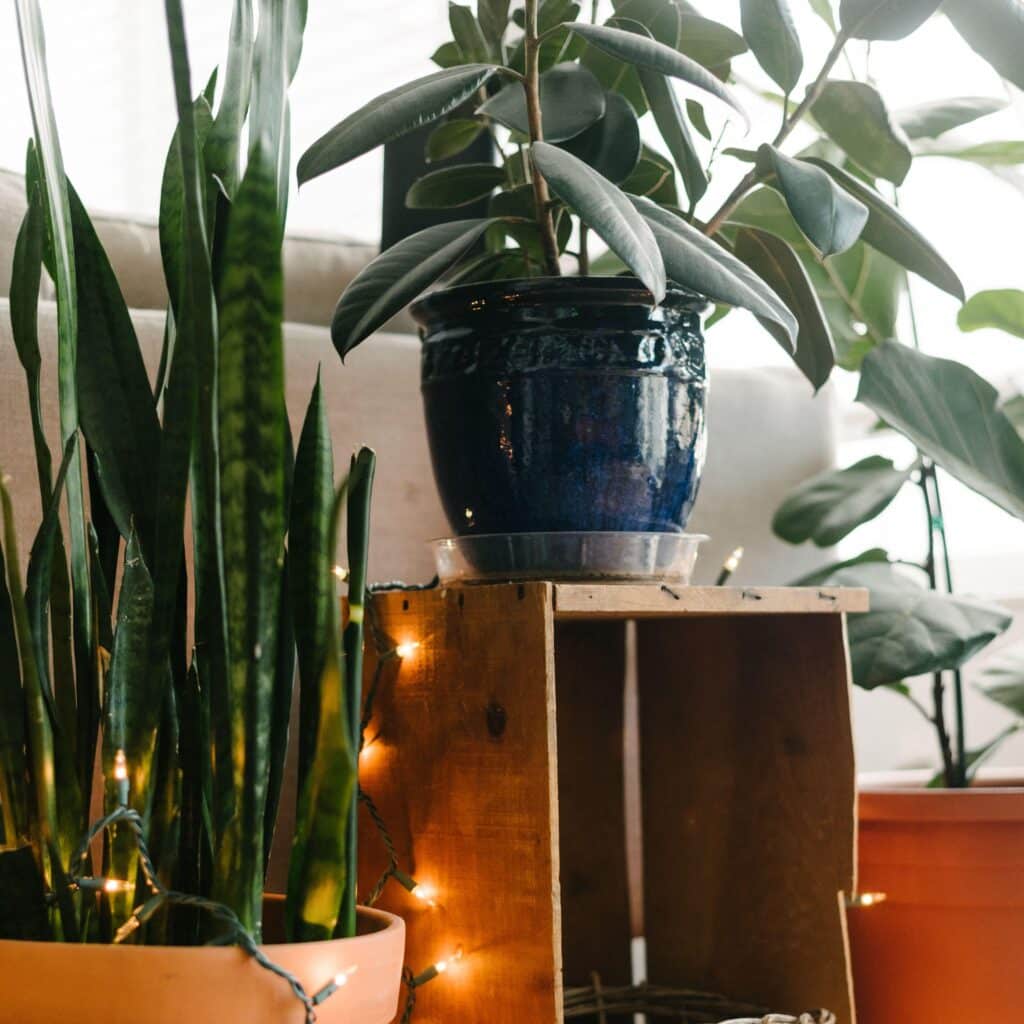

plastic waste
Plastic pots are the principle container used to accommodate most indoor vegetation. Nonetheless, most houseplant pots are made out of polypropylene (plastic #5) which isn’t broadly accepted through curbside recycling companies. Altogether, only one% of plastic #5 will get recycled within the US.
Which means if you wish to switch your houseplant right into a extra trendy container, the plastic pot it got here in will possible find yourself within the trash. Actually, in keeping with Marie Chieppo, Principal at EcoPlants Plans, 95 to 98% of all plastic plant pots find yourself in landfills.
It is a massive drawback for the surroundings, contemplating plastic’s life cycle is carbon intensive from starting to finish.
Plastic is a non-renewable useful resource that’s made out of crude oil, which is extracted from the earth through fracking. It’s then manufactured into plastic in a fossil-fuel powered manufacturing unit that makes use of plenty of vitality and water.
Total, solely 5-6% of plastic will get recycled. The opposite proportion leads to our landfills, surroundings, or incinerated.
Plastic by no means actually breaks down. Whereas it’s technically biodegradable (which merely means it would break up over time), it can’t be totally returned to the soil (aka composted).
Which means over the course of a whole bunch of years plastic will break down into microplastics. Microplastics have already been present in human blood, feces, and placentas. It’s estimated we eat 11,000 microplastics per yr, and the well being results of this are nonetheless unknown.
Regardless of all this, avoiding plastic pots is sort of not possible if you’d like a houseplant. They’re used nearly solely.
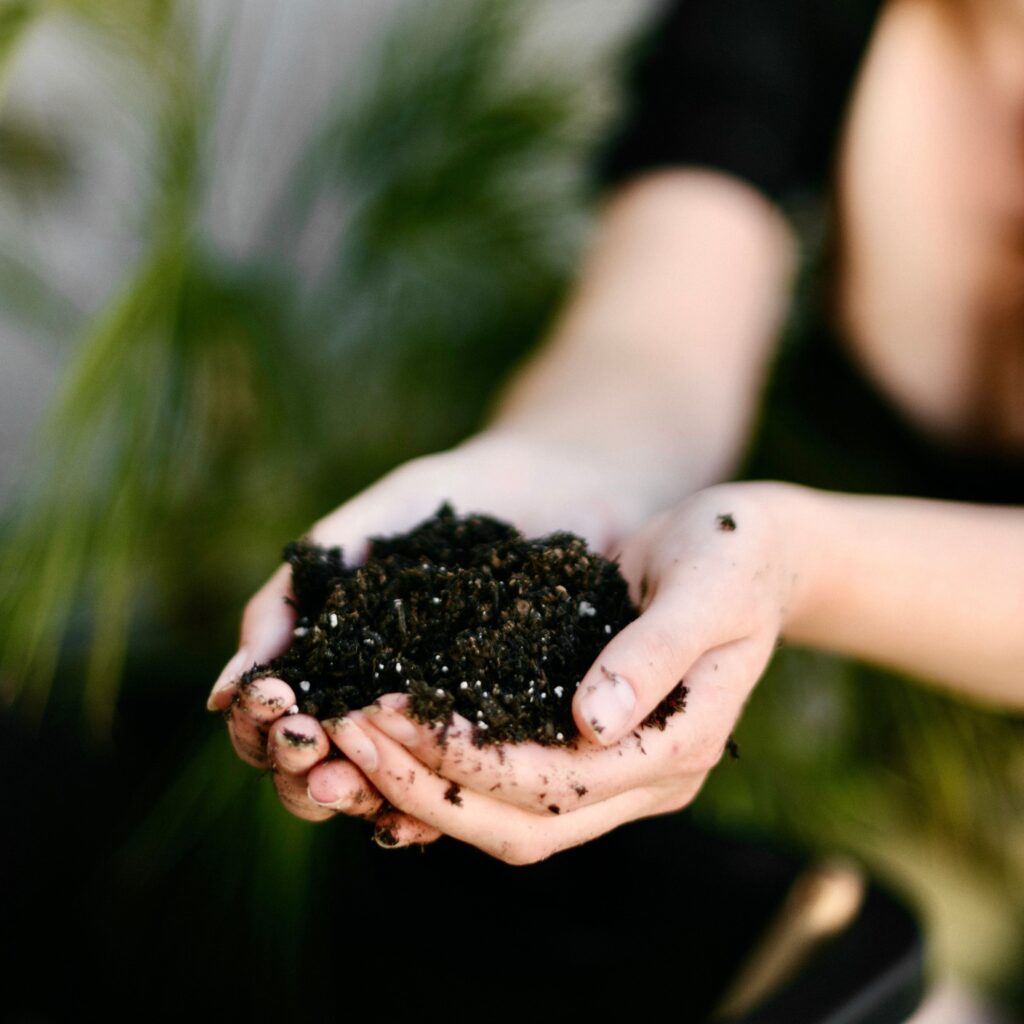

peat moss harvesting
One other massive environmental impression of houseplants is the soil used of their pots. Typically instances, houseplants will likely be planted in soil that accommodates peat moss.
Peat moss prevents vegetation’ vitamins from washing away throughout waterings. It will possibly additionally maintain a number of instances its weight in moisture, then launch that moisture into the plant’s roots when wanted.
However the issue lies in its harvesting, which requires the fixed disruption and overharvesting of peatlands.
Peatlands are wetlands that play a crucial position for stopping and mitigating the results of local weather change, lowering flood danger, preserving biodiversity, and guaranteeing protected ingesting water.
These wetlands are the most important pure terrestrial carbon sinks, that means they retailer extra carbon than all different vegetation varieties on this planet mixed.
When peatlands are broken and harvested for peatmoss, this results in a serious supply of greenhouse fuel emissions. In response to the IUCN, ~5% of world greenhouse fuel emissions from land use come from broken peatlands.
To extract the peatmoss, tractors scrape alongside the floor of peat bogs, which releases CO2 again into the ambiance.
Peatlands can even catch fireplace, which they typically do when harvested in dry circumstances. Burning peat is much more polluting than burning coal and may have extreme results on human wellbeing.
This additionally impacts wildlife too: The IUCN attributes the 60% decline of the Bornean orangutan inhabitants to the lack of peat swamp habitat over a 60-year interval.
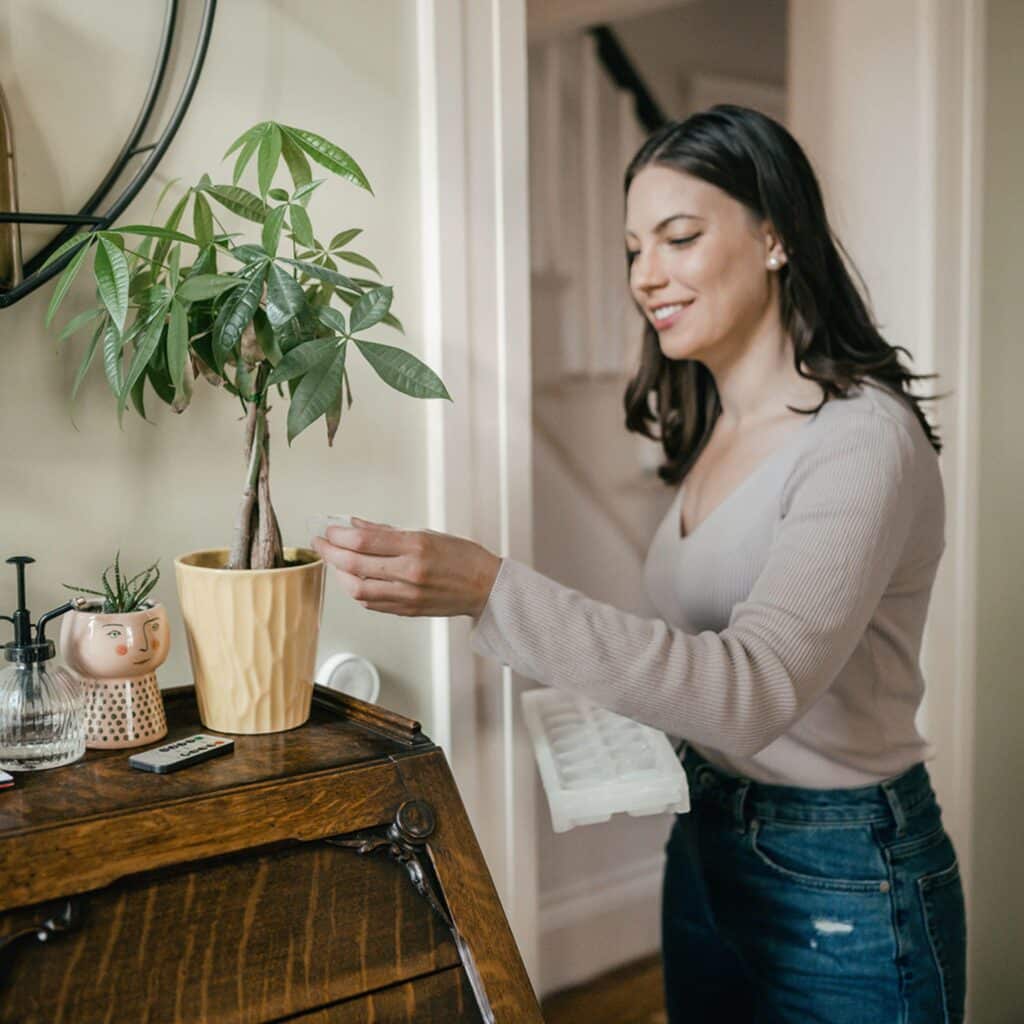

how do you develop houseplants sustainably?
Okay, so now that you just’re conscious of the issues, lets speak concerning the options!
You don’t need to toss out the houseplants you have already got both (that might be counterproductive).
Right here’s how one can make your houseplant habit somewhat bit extra sustainable.
purchase much less vegetation
I do know this sounds apparent, however reigning in what number of houseplants you accumulate is the simplest strategy to make a huge impact. Every little thing we eat has an environmental impression, so shopping for much less is all the time the most suitable choice.
propagate cuttings
Have some houseplants already? Or know somebody who does? Propagate some plant cuttings to develop a complete new plant. This fashion, you don’t have to purchase something new.
Use a small upcycled empty glass jar, like a spice container, to propagate your slicing. Simply fill it with some water, put your slicing inside it, and place it in a sunny location. While you see roots rising, it’s time to plant it in soil!
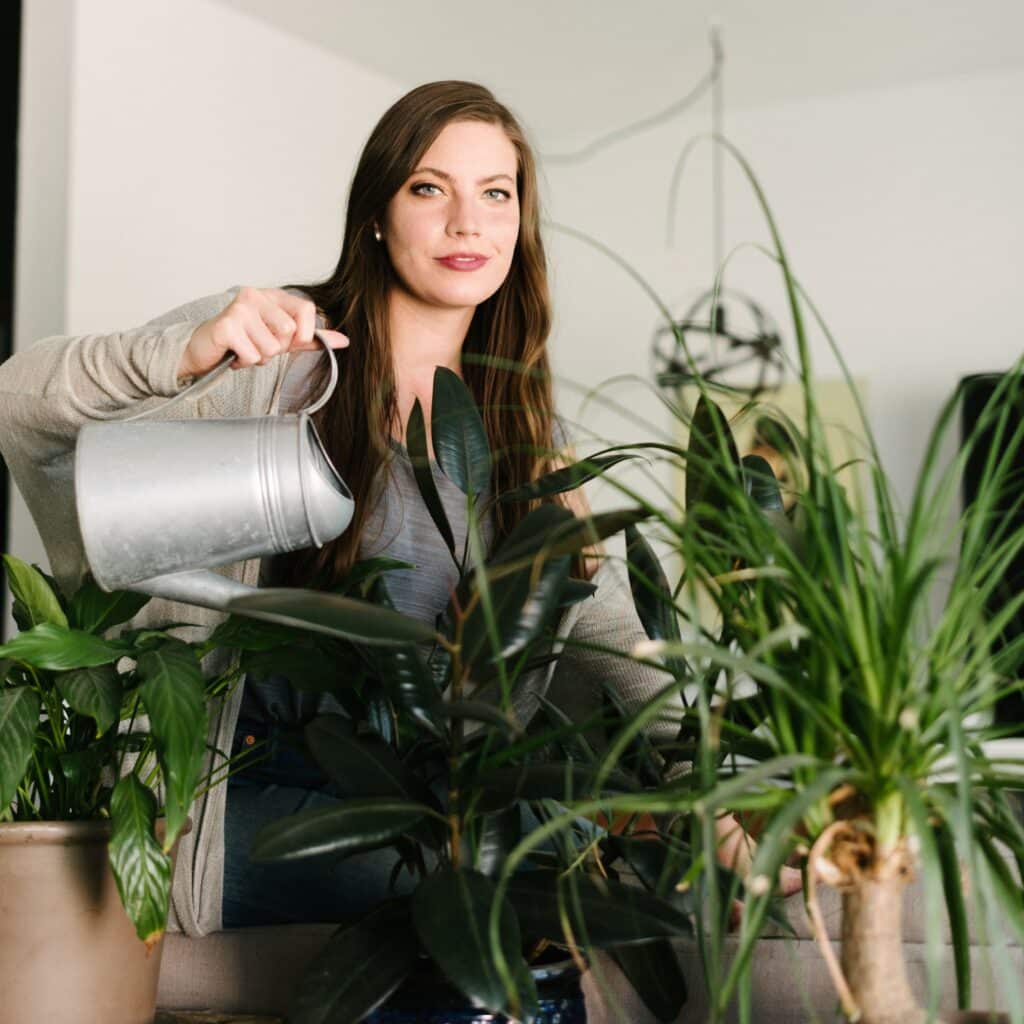

use sustainable potting soil
Peat-based soil is mostly utilized in houseplants. However peatmoss bogs are important carbon sinks which are being overharvested, which is contributing to local weather change.
As an alternative, search for peat-free soil, like Rosy Soil, which as an alternative makes use of biochar, compost, pine bark fines, mycorrhizae, pumice, and sand. There are not any artificial elements of their soil mixtures. Their packaging is recyclable and made out of plant-based elements.
It’s additionally an incredible thought to begin shopping for your houseplants from a clear and sustainable firm like The Sill. All their vegetation are potted in natural potting soil that’s made out of a mixture of worm castings, coir, compost, aged pine bark, and rice hulls. It’s utterly peat-free.
Plus, The Sill offers upcycled develop pots as an choice, and so they use carbon impartial transport on almost all their on-line orders.
You may as well simply use compost you made your self! Right here’s the right way to compost in your yard.
RELATED: Construct a DIY Compost Bin
For smaller areas, Lomi is a superb choice as a result of it creates nutrient-rich Lomi Earth (aka pre-compost) which is wealthy in microbial cultures and natural matter. That is good to make use of on vegetation of every kind to assist them flourish.
upcycle your plastic pots
It’s arduous to keep away from plastic pots with houseplants. As an alternative of tossing them out, disinfect them and save them for different gardening tasks. You might even be capable to return them to the nursery to allow them to be reused. Or test and see in case your area people backyard has any want of them.
get native vegetation
Search for native plant swaps or backyard golf equipment in your space. They’re typically organized on-line, through social media, or by libraries. Different gardeners are sometimes completely satisfied to provide you cuttings of their very own vegetation and may instruct you on suggestions to assist them thrive.
Do you may have a plant habit too? Will you be making an attempt out any of the following tips? Let me know within the feedback beneath.
